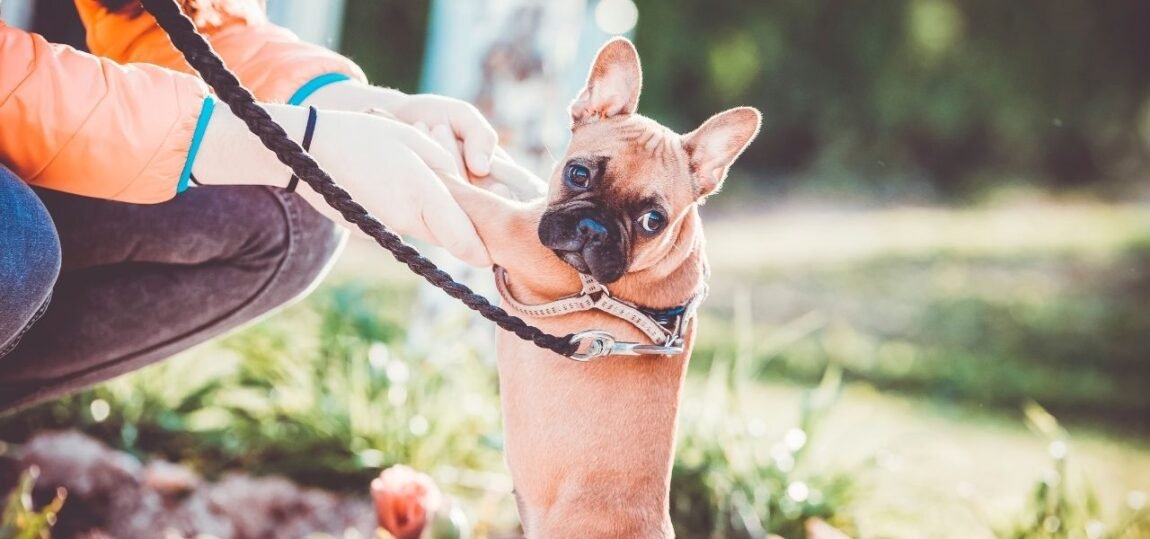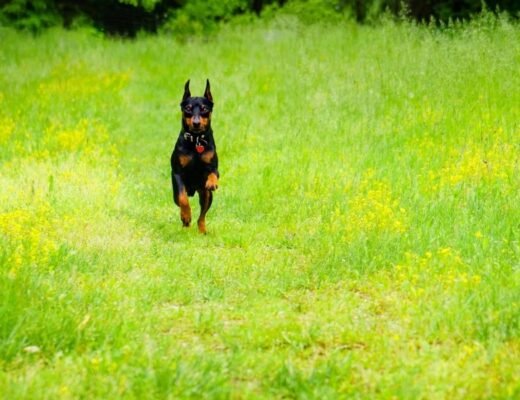Like humans, their four-legged companies can also experience anxiety from time to time. Overcome with anxiety, dogs may get very aggressive and even snap or bite. Pets show their anxiety in different ways. By recognizing dog anxiety signs, you can take appropriate actions to create a safe space for your pet.
1. The half-moon eye
The half-moon or whale eye occurs when the whites of your pet’s eyes appear in a half-moon shape at the inner or outer side of the eye. It is one of the classic signs of discomfort, stress or anxiety in a situation. Trainers and behaviorists watch for this behavioral signal to assess stress levels in dogs.
If you catch your new pet displaying the whale eye when he’s being petted by a stranger or a certain family member, you can ask them gently to move away from the dog and observe if it relaxes your pet.
2. Tail between the legs
This is a common sign of anxiety and stress in dogs. By tucking his tail between his hind legs, your pet is showing that he is frightened and asking not to be harmed.
3. Avoidance behaviors
Like humans, dogs try to avoid situations they deem unsafe or unpleasant. Animals and birds exhibit avoidance behaviors in response to visual stimuli, painful stimuli and warning calls/alarms. Most of us react intensely to the sight of a slithering snake or a centipede with conspicuous legs!
How do you identify avoidance behaviors? Observe if your pet gets up and leaves, turns her head away, barks and retreats, hides behind you or any object or rolls on his back submissively. Remove the stimulus causing your pet anxiety or don’t force your dog to go to a place or enter a particular area of the house where he feels stressed.
4. Displacement behaviors
Is your pet scared of something but responds by barking aggressively? He could be displaying displacement behavior, where a dog suppresses the urge to do something by doing something else.
Common displacement behaviors in dogs include suddenly sniffing an object or person, yawning when not tired, suddenly scratching even when she’s not itchy or licking its paws when there’s no irritation. Many of these behaviors are harmless but can be worrisome when destructive patterns or territorial aggression sets in.
5. Senior dog anxiety signs
As dogs get on in age and suffer cognitive dysfunction or medical disorders, they experience separation anxiety in your absence or when their guardian has passed on. If you have a senior dog who you leave in a neighbor’s or friend’s care while you’re away many hours a day, your pet may feel anxious. Signs of separation anxiety include:
- Soiling the crate/house
- Pacing and trembling when you prepare to leave the house
- Whining or howling excessively when you leave
- Refusing to eat treats/food when left alone, and eating only once you return
Dogs can have anxiety and it is healthy for them to display their state of mind. When you spot dog anxiety signs, monitor your pet’s behavior for a few days. If the behaviors persist, pursue quick intervention, such as through products that alleviate stress in dogs and help them adjust in new environments.
Photo by Michelle Tresemer on Unsplash




